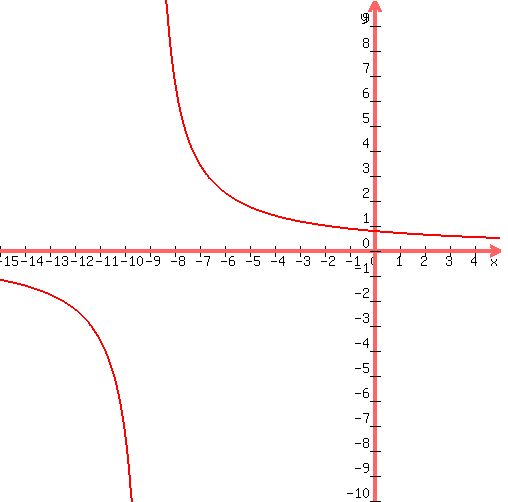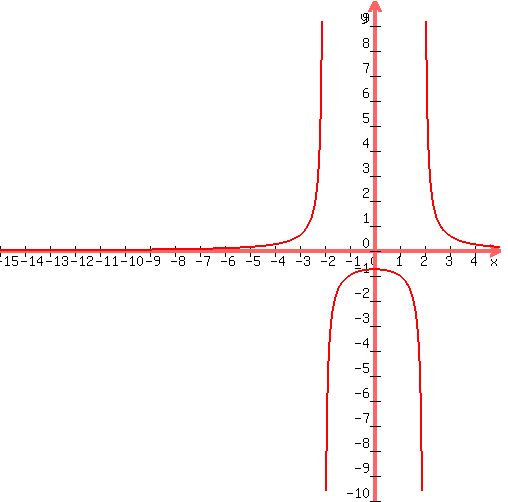|
Question 128507: Find the domain and range of the following
d)

e)

Answer by jim_thompson5910(35256)   (Show Source): (Show Source):
You can put this solution on YOUR website! # 1
d)
 Start with the given function Start with the given function
 Set the denominator equal to zero. Remember, dividing by 0 is undefined. So if we find values of x that make the denominator zero, then we must exclude them from the domain. Set the denominator equal to zero. Remember, dividing by 0 is undefined. So if we find values of x that make the denominator zero, then we must exclude them from the domain.
 Subtract 9 from both sides Subtract 9 from both sides
 Combine like terms on the right side Combine like terms on the right side
Since  makes the denominator equal to zero, this means we must exclude makes the denominator equal to zero, this means we must exclude  from our domain from our domain
So our domain is: 
which in plain English reads: x is the set of all real numbers except 
So our domain looks like this in interval notation
\cup\left(-9,\infty \right))
note: remember, the parenthesis excludes -9 from the domain
---------------------------------------------------------
Now to find the range, simply graph the function to get
note: ignore the vertical lines, they are not part of the graph and are asymptotes

Looking at the graph, we can see that y can be any number except 0. So  . .
So our range is: 
which in plain English reads: y is the set of all real numbers except 
So our range looks like this in interval notation
\cup\left(0,\infty \right))
note: remember, the parenthesis excludes 0 from the range
e)
 Start with the given function Start with the given function
 Set the denominator equal to zero. Remember, dividing by 0 is undefined. So if we find values of x that make the denominator zero, then we must exclude them from the domain. Set the denominator equal to zero. Remember, dividing by 0 is undefined. So if we find values of x that make the denominator zero, then we must exclude them from the domain.
 Factor the left side (note: if you need help with factoring, check out this solver) Factor the left side (note: if you need help with factoring, check out this solver)
Now set each factor equal to zero:
 or or 
 or or  Now solve for x in each case Now solve for x in each case
So our solutions are  or or 
Since  and and  make the denominator equal to zero, this means we must exclude make the denominator equal to zero, this means we must exclude  and and  from our domain from our domain
So our domain is: 
which in plain English reads: x is the set of all real numbers except  or or 
So our domain looks like this in interval notation
\cup\left(-2,2 \right)\cup\left(2,\infty \right))
note: remember, the parenthesis excludes -2 and 2 from the domain
---------------------------------------------------------
Now to find the range, simply graph the function to get
note: ignore the vertical lines, they are not part of the graph and are asymptotes

Looking at the graph, we can see that y can be any number except 0. So  . .
So our range is: 
which in plain English reads: y is the set of all real numbers except 
So our range looks like this in interval notation
\cup\left(0,\infty \right))
note: remember, the parenthesis excludes 0 from the range
|
|
|
| |